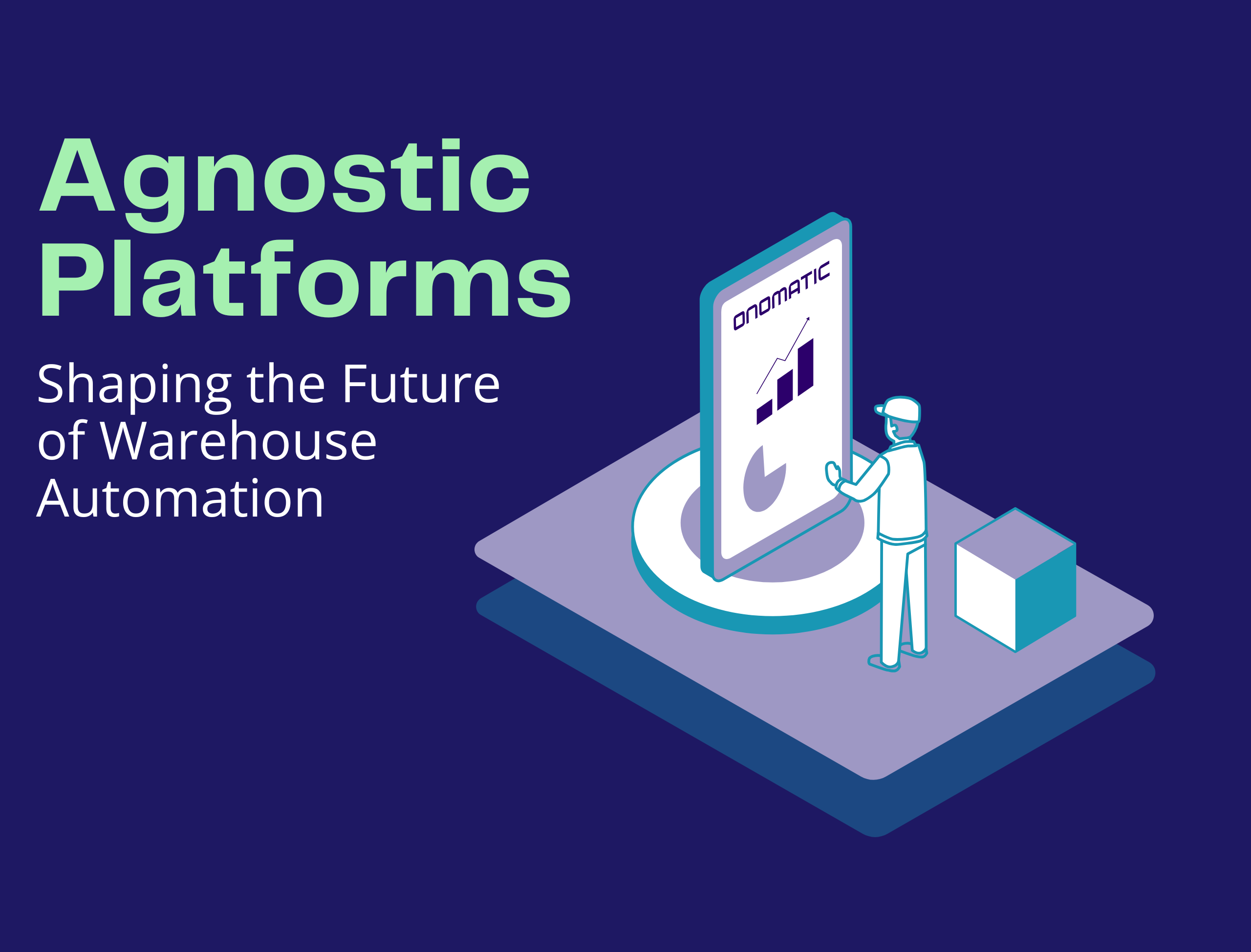Onomatic | 3 min read
At ProMat 2025, Lori Kesten, Vice President of Strategic Alliances at Automatic, met with Jeremy Hudson, Vice President of Client Services at Open Sky Group, to discuss the evolving landscape of automation, multi-agent orchestration platforms, and the importance of software solutions that bridge the gap between disparate automation systems.
The Importance of Multi-Agent Orchestration Platforms
With the increasing use of robotics and automated solutions in warehouses, the need for a software solution that enables these systems to work in harmony has become more apparent. This is where multi-agent orchestration platforms like Onomatic step in. Onomatic’s goal is to ensure all automation systems, no matter the technology or manufacturer, work seamlessly together in real time.
As automated technology has advanced, Open Sky Group has seen a shift in how companies approach automation—moving from isolated, single-purpose systems to integrated, multi-solution setups. This transition presents both exciting opportunities and challenges for clients as they try to efficiently link multiple automation systems together.
The Challenges of Traditional Integration
While companies have historically relied on point-to-point solutions (such as socket communication or APIs) to connect different automation systems, this often leads to “islands of automation.” These isolated systems, while advanced, can become cumbersome and inefficient when trying to scale or integrate additional technologies.
Warehouse management systems (WMS), while effective at managing inventory and operations, are not designed to orchestrate complex automation workflows. WMS vendors may claim to integrate automation, but they often struggle with creating fluid, real-time orchestration across diverse systems.
The Agnostic Advantage: Future-Proofing Automation
Onomatic’s platform is designed to be neutral, meaning it isn’t tied to any particular technology or vendor. This fundamental trait allows businesses to choose from a wide range of automation systems, not just for their current needs but also for future growth. By starting with a modular, agnostic foundation, companies can integrate new technologies as they evolve, without worrying about compatibility issues down the road.
Customers should consider automated solutions the same way as one would consider buying a house. A home with a one-car garage might be fine for now, but eventually you may need space for a growing family. Similarly, businesses should plan for future automation needs and ensure their systems are scalable and flexible enough to accommodate new technologies as they emerge.
Starting with a Strong Foundation
As companies embark on their automation journeys, businesses cannot forget the value of laying a solid foundation from the start. Even if a business is initially implementing only one form of automation—such as an automated storage and retrieval system (ASRS) or a goods-to-person solution—investing in an agnostic orchestration platform like Onomatic helps ensure that future integrations are smooth and straightforward. This forward-thinking approach reduces the risk of costly, time-consuming efforts to integrate new technologies later.
Sound Bite:
“I think there’s a massive benefit to being more holistic about how you think about your software solutions and how it’s going to tie all these other hardware solutions together,” Jeremy says.
The Bottom Line
Companies are increasingly interested in linking robotics with other automated systems, such as adding robotic arms to improve picking processes. By using orchestration software that can easily accommodate these advancements, businesses can ensure that their operations remain efficient and future ready. As our experts say, the key to success in automation is not just about investing in the latest technology, but about having the right software in place to tie everything together.
Interested in learning more about how businesses can leverage Onomatic to maximize their automation ROI? Schedule a demo with our team.

